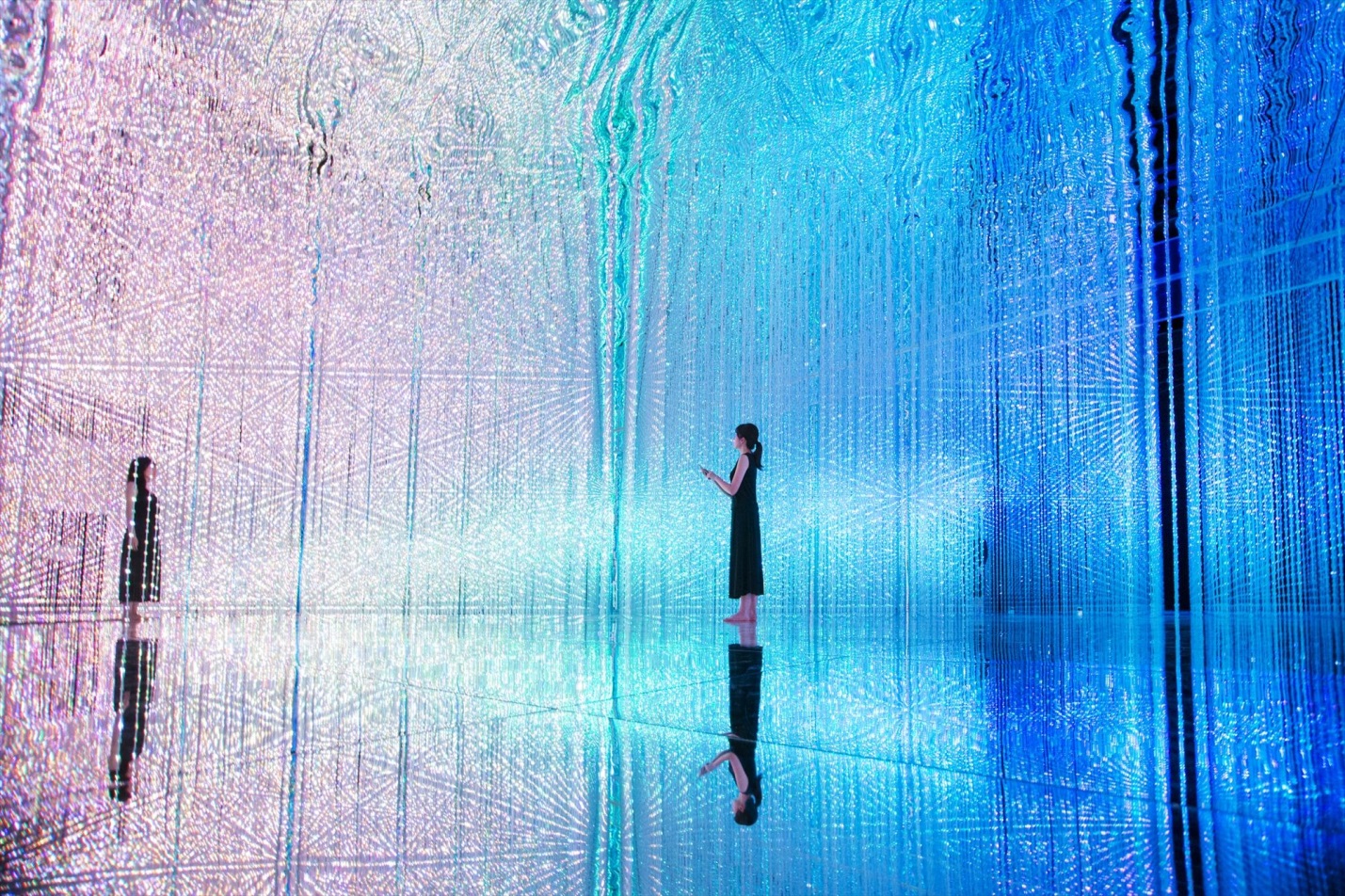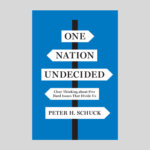In physics, spacetime is any mathematical model that combines space and time into a single interwoven continuum. As the digital domain rapidly expands the human relationship to both space and reality, not to mention dimensions of time, the idea of achieving a unified consciousness is hardly abstract. teamLab, a digital art collective based in Japan, is pioneering the intersection of space, time, reality and consciousness through immersive, interactive digital artworks.
teamLab is a collective of young Japanese creatives, drawn from fields as diverse as computer science, mathematics, graphics design, art history, and philosophy. Working collaboratively in a scruffy Tokyo office building, the vibe is of a tech start-up, with dozens of twenty some-things working at screens in cramped quarters. There are no private offices, and no indications of a hierarchy of any sort. All share equally in the profits. Large scale commercial projects for shopping malls and corporate promotions pay the rent, but clearly people are there because of their commitment to art and to the creative process. While artists have for centuries past employed armies of studio assistants, the collective, cross-disciplinary, tech-savvy approach TeamLab is pioneering might well represent the future. Founded by Toshiyuki Inoko, teamLab is breaking new ground in the art world to reveal new dimensions of art making and interactivity.
teamLab seeks “an existence with the possibility for transformation.” Arguably, teamLab is challenging the human perception of reality through spatial reconfigurations and liberation from physical constraints. To put it simply, teamLab believes that the digital domain can expand art.
“With immersion of the body into the artwork, the boundary between the self and the artwork becomes ambiguous. And, through the experience, the boundary between the self and the world begins to disappear. Because our presence and the presence of others can cause change in the shared world of the artwork, it is possible that we will feel ourselves and others meld with the world and become one body.” –teamLab
The teamLab concept is not unlike the generalized meaning of spacetime: it is really the combination of space and time to reveal new dimensions. teamLab’s explanation of ultrasubjective space underscores the arrival of immersive art experiences in our digital age: “Ultrasubjective space adopts the concepts and representations of spatial awareness found in the art of premodern Japan and interprets them using digital technology. It provides immense possibilities for digital art by allowing viewers to interact directly with the artwork.”
Western art traditions dictate the use of a fixed focal point, better known as “single-point perspective.” Ultrasubjective space, in contrast, does not adhere to foxed vanishing points. As viewers shift their positions and points of view, the visual space changes. It allows for the creation of vast spaces in which viewers are liberated from established “space” and experience multiple perspectives. As a viewer walks freely through an art space, the artwork is transformed based on his or her behavior and movement. Viewers are able to experience art in a new way—through movement, interaction, and collaboration. Ultrasubjective space allows art to flourish in a new and previously unimagined way.
Take the work “Flowers and People, Cannot be Controlled but Live Together – A Whole Year per Hour.” It is in a state of continuous change, and over the period of one hour, a seasonal year of flowers blossoms and scatters. The flowers bud, grow, and blossom before their petals begin to wither, and eventually fade away.
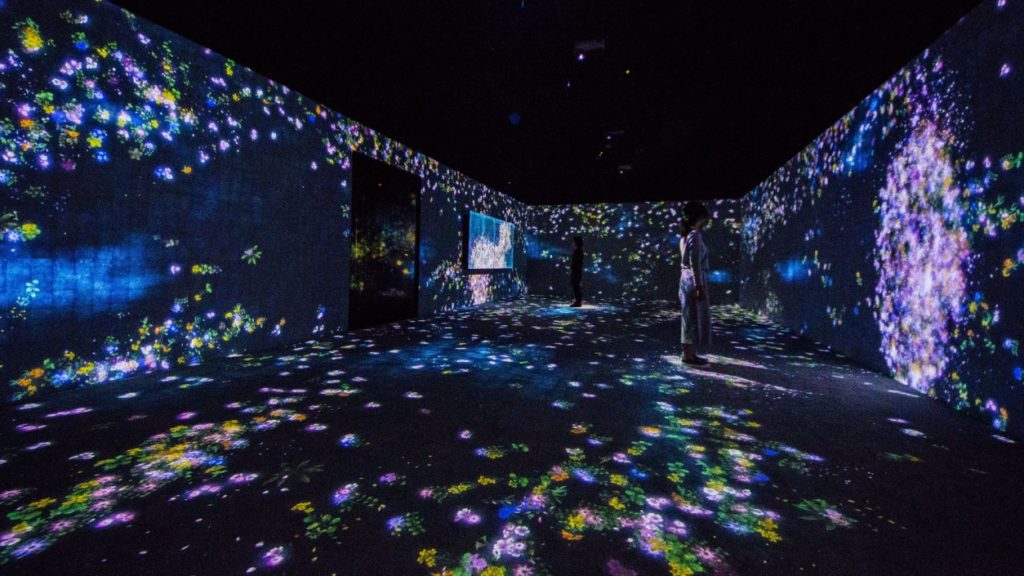
teamLab, 2015, Interactive Digital Installation, Endless, Sound: Hideaki Takahashi
The cycle of growth and decay repeats itself in perpetuity. The flowers are interactive, depending on the proximity of the viewer to the work, or if the viewer touches the flowers, the flowers simultaneously come to life, or shed their petals wither and die all at once. It is not pre-recorded, nor is it an animation on loop. The work is rendered in real time by a computer program. The interaction between the viewer and the installation causes continuous change in the artwork; previous visual states can never be replicated, and will never reoccur.
To further redefine space and art: as teamLab has demonstrated with truly immersive environments, digital technology has made it possible for artworks to expand physically. Since digital art can easily expand, it gives the audience unparalleled autonomy within the space. As teamLab manipulates and uses much larger spaces, viewers are able to experience artwork directly. Viewers become a part of the artwork itself. Elements from one work can fluidly interact with and influence elements of the other works exhibited in the same space. In this way, the boundaries between art pieces evaporate and are redefined.
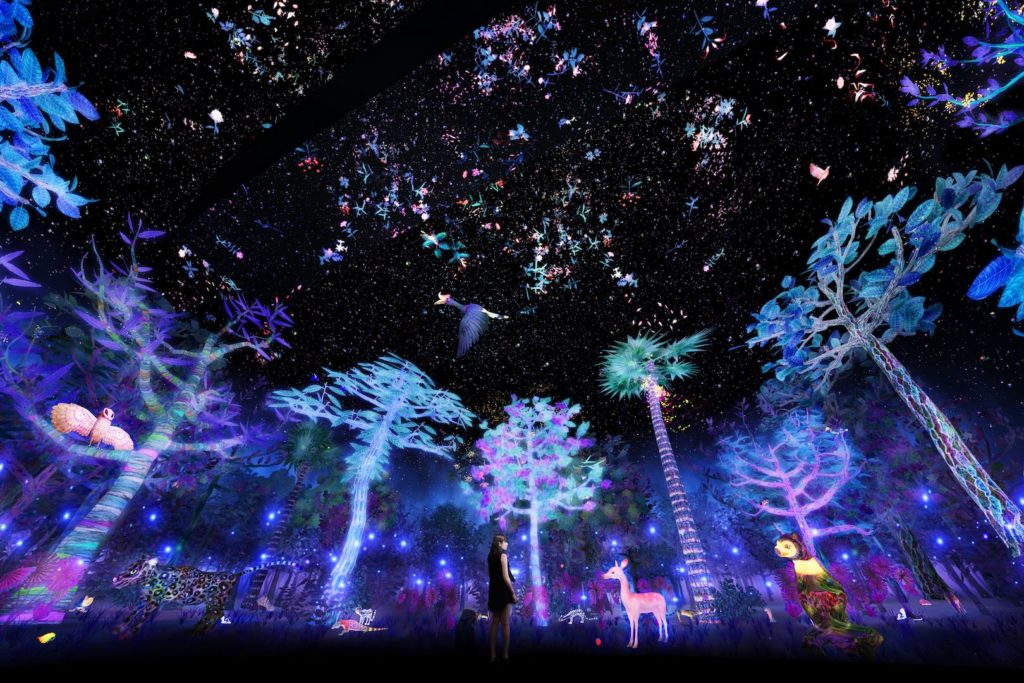
teamLab, 2015, Interactive Digital Installation, Endless, Sound: Hideaki Takahashi
teamLab’s projects honor the past with a wink to the future through pre-modern knowledge and ancient Japanese spatial recognition:
“Until the late 19th century, people in Japan depicted the world differently than today. This ancient Japanese sense of spatial recognition has been lost in modern times. With our work, we explore whether the world itself has changed spatially, or if people have lost sight of how they once saw things. Traditional Japanese painting is generally described as “flat” or ideological. We believe that our ancestors saw the world exactly as depicted in ancient Japanese paintings, to the same extent that contemporary Japanese are aware of space when they see modern perspective-based paintings or photos.”
teamLab’s work “United, Fragmented, Repeated and Impermanent World” looks to the early modern Japanese painter Jakuchu Ito (1716-1800), whose unique style of painting on a grid of tens of thousands of squares – essentially pixels — predates both pointillism and impressionism.
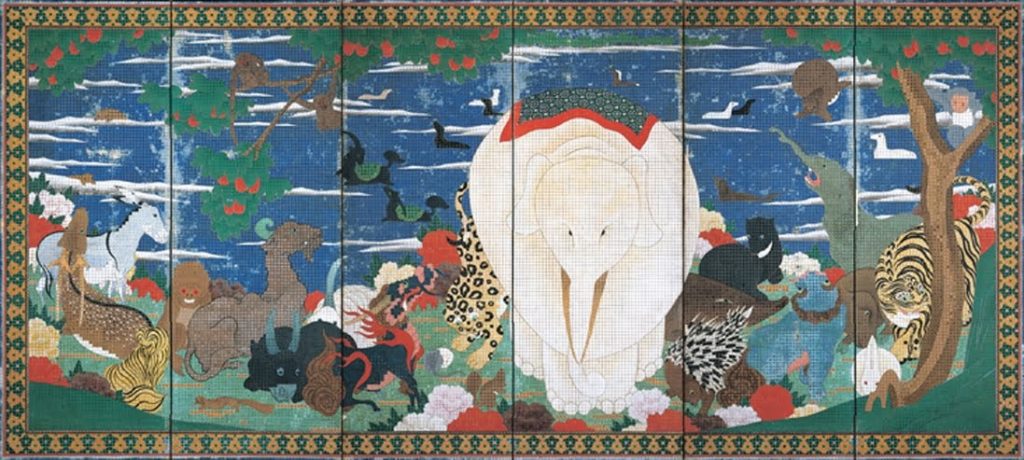
Birds, Animals, and Flowering Plants in Imaginary Scene. Itō Jakuchū (1716-1800) Edo Period, 18th century
Pair of six-panel folding screens, ink and colors on paper
Jakuchu’s intuitive digital sense served as the inspiration for “United, Fragmented, Repeated and Impermanent World,”which looks to the impact of the internet on art making and art viewers.

United, Fragmented, Repeated and Impermanent World teamLab, 2013, Interactive Digital Work, Endless, 8 channels, Sound: Hideaki Takahashi
Each square is treated like pixel art, but each square continues to animate and abstract, creating new visual effects. As viewers approach the work, and interact with it, the colors mix and the artwork changes. The work changes along with each visitor, and it is never quite the same. See the work in action:
teamLab is actually employing a scientific approach to uncover the logic of ultrasubjective space through digital methodologies. First, they use a computer to build a world of 3-D objects in a 3-D space. Then they effectively “flatten” it by way of applying a new logical structure to the study. teamLab’s study of cultural perspectives, specifically the Western perspective, reveals how the collective sees the world so differently: “we can conclude that it is possible to gain a new way of seeing the world that stems from the connection between the appearance of the world and our behavior within that world.”
![[Figure 1] View of 3-D objects in a 3-D space, flattened using perspective (from Flower and Corpse Glitch Set of 12: Prosperity and Disaster) [Figure 2] View of 3-D objects in a 3-D space, flattened using the logic of Ultra Subjective Space (from Flower and Corpse Glitch Set of 12: Prosperity and Disaster)](/wp-content/uploads/2017/01/Projects-in-3-D-Space-1024x409.jpg)
[Figure 1] View of 3-D objects in a 3-D space, flattened using perspective (from Flower and Corpse Glitch Set of 12: Prosperity and Disaster) [Figure 2] View of 3-D objects in a 3-D space, flattened using the logic of Ultra Subjective Space (from Flower and Corpse Glitch Set of 12: Prosperity and Disaster)
Take the work “Harmony” with that in mind. teamLab’s exhibition for the 2015 Expo Milano recreates the experience of walking through a Japanese rice field, with screens that have been installed to create an interactive projection space that seems to spread out infinitely. The images change as visitors walk through the exhibition, creating a space that looks as if people are wading through rice fields:
teamLab believes that if cities were to become more like digital artworks, the presence of other people could become a positive element. The search for new relationships between people can transcend art, potentially creating new relationships between cities and individuals, as well as new ways to bring peace among people. The future is bright with teamLab’s artists redefining the space and time between us.
See more about teamLab and upcoming exhibitions and complete catalog at team-lab.net.

